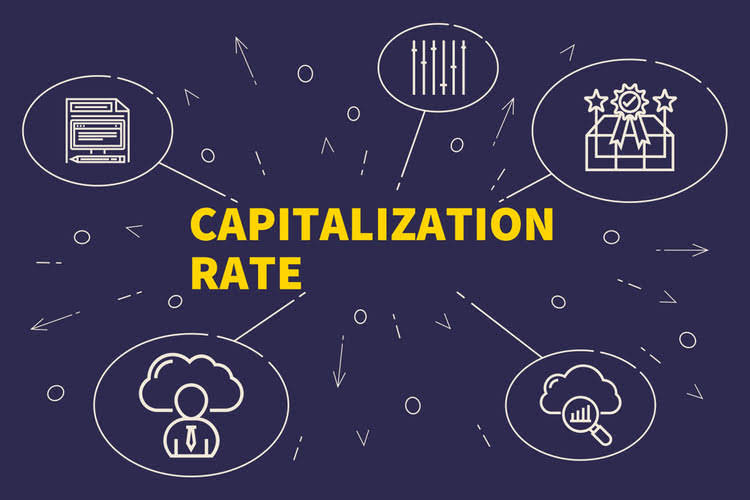Financial Statements: In-Depth Explanation with Examples

The board members can then keep track of how much money is due to be paid to shareholders as dividends. Typically, companies prepare the statement of stockholders’ equity quarterly and annually, in line with other financial statements. However, the frequency can vary Online Bookkeeping based on regulatory requirements and the company’s internal policies. Analyzing the statement provides insight into the sources of equity capital and impacts on shareholder value. For additional guidance, there are many free, editable templates available online to download and customize when constructing your company’s statement of stockholders’ equity.
- However, in simplest terms, it’s essentially what your organization has earned that remains in the business.
- It also helps in the planning of distribution of profits by determining the portion of profits it will keep in the business and the amount it will distribute among the shareholders of company.
- Therefore, Apple Inc.’s stockholder’s equity, as of September 29, 2018, stood at $107,147 Mn.
- While the asset value is normally more than the company’s liabilities, there can be instances where the figures reflect an opposite scenario.
- Understanding and analyzing changes in shareholders equity can provide insightful information on the financial health and performance of a company.
- Sophisticated investors and lenders will read closely the notes to the financial statements.
Can you provide real-world scenarios of ownership changes?
The common stockholder is usually the last one to get paid after all debtholders and preferred stockholders get their due amounts. This Statement of Shareholder Equity, when provided alongside other financial statements, gives shareholders a comprehensive view of how their stake in the company has evolved over the period. Subtract any dividends (for corporations) or owner withdrawals (for smaller businesses or sole proprietorships) from the total.
Statement of Comprehensive Income
On the contrary, investors may perceive it as a mixed signal from the company and hesitate to invest further. Additional paid-in capital represents the excess amount paid by investors over the par value of the stock during issuance. Let us now take the example of a small business owner who normal balance is into the computer accessories business in the US.

Statement of Stockholders’ Equity Templates
While the number of shares doubles, the total equity value remains the same. This action would be reflected in the common stock and possibly the APIC components of the equity statement, depending on the structure of the split. These items impact equity but are not included in net income until they’re realized.
Business
The number of shares issued refers to the number of shares issued by the corporation and can be owned by either external investors or by the corporation itself. Stockholders Equity provides highly useful information when analyzing financial statements. In events of liquidation, equity holders are last in line behind debt holders to receive any payments. The above equity examples in business give us a very good idea about the calculation of equity using data and financial information taken from the financial statements of companies. The companies are from different sectors, and are of different scale of operation, from small business to multinational enterprises.
- The capital structure of a company, which includes both debt and equity, is a key determinant of its financial strategy and risk profile.
- Below are Hershey Company’s consolidated statements of stockholders’ equity.
- This component reflects the company’s ability to generate profit and sustain growth over time.
- This integration allows stakeholders to evaluate how operational outcomes influence equity growth or contraction.
- The statement, which reveals changes in equity over a specified period, gives stakeholders a clear look at how equity is being managed.
- Generally a long term liability account containing the face amount, par amount, or maturity amount of the bonds issued by a company that are outstanding as of the balance sheet date.
- This transparency enables stakeholders to assess the company’s financial health and strategic decisions.
Retained Earnings can be used for funding working capital, fixed asset purchases, or debt servicing, among other things. The statement of owner’s equity provides investors with a more detailed understanding of how each individual equity account has been specifically adjusted across different periods. Secondly, these correlations aid in determining the return on shareholder investments. Fluctuations in shareholder’s equity imply changes in the shareholders’ wealth.

Get access to all of our books, spreadsheets, academic papers, cheat sheet, audio vault, videos, and more. This financial document transparently provides investors with crucial information about their equity value. Business.com aims to help business owners make informed decisions to support and grow their companies. We research and recommend products and services suitable for various business types, investing thousands of hours each year in this process. It is always great to prepare the blank statement of changes in equity, and we can follow the format as suggested by implementation examples in IFRS 18.

Is Stockholders’ Equity Equal to Cash on Hand?
A statement of shareholder equity is primarily used by investors and analysts. It provides detailed information about the changes in the value of shareholders’ equity or ownership interest in a company over a specific accounting period. This document helps investors understand the reasons behind the changes in equity statement of shareholders equity example accounts and the business activities that contribute to these movements. The statement of owner’s equity is commonly calculated by referring to the company’s balance sheet and income statement during a specific period of time. The income statement provides information about the net income or losses of the business, while the balance sheet will provide information regarding owner contributions and draws. Contributed capital, or paid-in capital, represents the total value of cash and other assets shareholders invest in the company in exchange for stock.

Long-term liabilities
- A balance sheet line that includes cash, checking accounts, and certain marketable securities that are very close to their maturity dates.
- When dividends are paid out, they are deducted from the company’s retained earnings and therefore reduce equity.
- The statement outlines equity activity, including common stock issued, dividends paid, and changes in retained earnings.
- Similarly, it is prepared before the balance sheet since the owner’s equity must be reported on the balance sheet at the end of the period.
- A few points to note here are that the capital increased overall from the numerical point of view.
- Thus, the document plays a very vital role in financial reporting because it provides useful information about owner’s contribution, profit distribution and serves as a tool to assess the financial performance of the business.
- This ensures that the stockholders’ equity section reflects the true economic impact of these transactions.
For the past 52 years, Harold Averkamp (CPA, MBA) has worked as an accounting supervisor, manager, consultant, university instructor, and innovator in teaching accounting online. David is comprehensively experienced in many facets of financial and legal research and publishing. As an Investopedia fact checker since 2020, he has validated over 1,100 articles on a wide range of financial and investment topics. Founder shares or class A shares have more voting rights than for instance the other class of shares. Financial health can be understood by analyzing the statement of equity as it gives a broad picture of the performance. Shaun Conrad is a Certified Public Accountant and CPA exam expert with a passion for teaching.